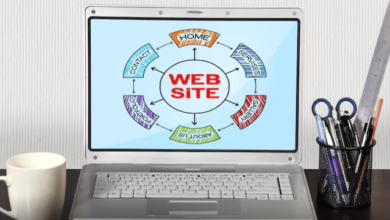Building Resilient Email Systems: Strategies and Tools for Enhanced Security

Introduction
Email systems serve as a fundamental pillar of organizational communication, acting as the lifeline for the seamless flow of information. They enable instant connectivity and facilitate collaborative efforts, thus driving operational success across sectors. However, the highly interconnected nature of email systems makes them susceptible to cyber threats. Cybercriminals exploit these systems to conduct data breaches, spear phishing attacks, and malware distribution. This reality underlines the need for comprehensive protective measures. Employing robust solutions such as https://www.group-ib.com/products/business-email-protection/ can help organizations safeguard sensitive business information while ensuring operational integrity.
The rapid evolution of cyber tactics characterizes the modern threat landscape, constantly challenging organizations’ security measures. As technology advances, so does the sophistication of cyberattacks, necessitating a dynamic response from security protocols. Organizations must understand the common vulnerabilities within their email systems to counter these ever-evolving threats effectively. A successful security strategy will integrate a combination of advanced technological tools and human-centric measures, such as employee education and awareness, to establish a holistic security framework.
Understanding Email Vulnerabilities
Email vulnerabilities primarily arise from human error and inherent weaknesses within email protocols. One of the most notorious and successful tactics used by cybercriminals is phishing. Through phishing attacks, cybercriminals impersonate trusted entities, such as colleagues or well-known businesses, tricking recipients into providing sensitive information or downloading malicious attachments. For instance, an employee may receive an email that looks like it’s from their IT department, urging them to update their login credentials via a fake link. According to experts from CSO Online, fostering a culture of security awareness through training and educational initiatives is critical to mitigating such risks. Well-informed employees with the skills to identify and respond to suspicious activities can bolster an organization’s overall defense strategy.
The Importance of Secure Email Communication
In the digital age, secure email communication protects sensitive information from unauthorized access and exploitation. Emails are conduits for transmitting confidential data, from business contracts and strategic plans to personal customer information. A compromise in these communications can have far-reaching consequences, including financial loss, reputational damage, and potential legal ramifications if data privacy regulations are breached. Consequently, securing email communication channels is fundamental to organizational risk management. Organizations must move beyond basic encryption and adopt a comprehensive security strategy that proactively addresses all potential exploitation vectors to maintain the integrity and confidentiality of their communications.
Tools for Email Protection
Organizations can employ various protective tools to safeguard email systems from cyber threats. Essential components include spam filters that block unsolicited and potentially harmful content and advanced encryption protocols that protect data integrity during transmission. Additionally, anti-virus software continuously identifies and neutralizes malicious software before it can cause harm. At the same time, firewalls are a formidable barrier preventing unauthorized access. These tools operate in concert, creating a multi-layered defense system that thwarts attacks and preserves the organization’s communication infrastructure. Together, they contribute significantly to building a resilient security framework that adapts to emerging vulnerabilities and ensures ongoing protection against evolving cyber threats.
Steps to Ensure Email Security
- Implement Two-Factor Authentication: This method requires users to provide two separate forms of identification before gaining access to their email accounts, thereby significantly reducing the risk of unauthorized access. Organizations add a secondary verification step—often a unique code sent to a mobile device—to provide an additional security barrier even if primary credentials are compromised.
- Regular Software Updates: Consistent and timely updates are essential for patching vulnerabilities that hackers could exploit. Software vendors frequently release updates that address security holes, and ensuring that all software and systems integrate these up-to-date patches is vital for defending against new and evolving threats. An organization’s proactive update approach represents a crucial defense against exploitable weaknesses.
- Employee Training: Continuous training programs that educate employees about the latest email scams and instill safe email practices are pivotal in bolstering an organization’s security posture. Empowering workers with the knowledge and skills to identify, report, and mitigate email threats fosters a culture of vigilance. It creates a workforce that is an effective line of defense against cyber threats.
Common Email Threats to Watch Out For
The email threat landscape comprises various attack vectors beyond phishing, including ransomware and fraudulent emails. Ransomware attacks involve encrypting a victim’s data and demanding payment for its release. At the same time, fraudulent emails often imitate legitimate entities to trick recipients into sharing sensitive information or credentials. Understanding these threats and their methodologies enhances an organization’s ability to anticipate and counter these attacks. By instilling a practice of cautious scrutiny among employees—encouraging them to critically assess the authenticity of emails before interacting with them—organizations can effectively diminish the impact of these evil tactics and preserve email system integrity.
Best Practices for Corporate Email Security
To bolster email security, organizations must adopt a holistic approach encompassing numerous best practices and protocols. Implementing a zero-trust model, where no email or attachment is inherently trusted, substantially reduces the risk of infiltration by unknown threats. Furthermore, utilizing encrypted file-sharing channels and enforcing stringent authentication measures for accessing sensitive information can thwart unauthorized attempts to compromise data security. Routine reviews and updates to these practices ensure they effectively address new threats and align with industry standards. By consistently applying these strategies, organizations create a resilient security environment that effectively mitigates risks and adapts to the ever-changing threat landscape.
The Future of Email Security
Innovative advancements herald promising enhancements in email security, providing organizations with advanced tools to safeguard their communication platforms against sophisticated threats. Emergent technologies, such as AI-driven threat detection, offer powerful capabilities for real-time threat analysis and proactive neutralization of cyber dangers before they manifest. Likewise, blockchain technology presents the potential for authenticating email origins and effectively preventing spoofing attempts. Staying informed about these transformative developments is imperative for organizations aiming to maintain their security protocols as cutting-edge and effective. According to Forbes industry insights, embracing these innovations will be crucial in enhancing the agility and efficacy of email defenses, ensuring organizations remain a step ahead in the ever-evolving cyber threat landscape.
Conclusion: Building a Resilient Email System
Developing a resilient email system is an ongoing endeavor that demands diligent effort and continuous monitoring. Successful organizations contend with the evolving threat landscape by implementing and regularly updating their security mechanisms while equipping employees with the knowledge necessary to recognize and respond to emerging cyber threats. Companies can effectively shield their email systems from evolving challenges by fostering a security culture and adopting adaptive strategies rooted in technological advancements and best practices. This guarantees the confidentiality, integrity, and reliability of their communications, empowering them to navigate the complexities of today’s cyber environment with confidence and resilience.



